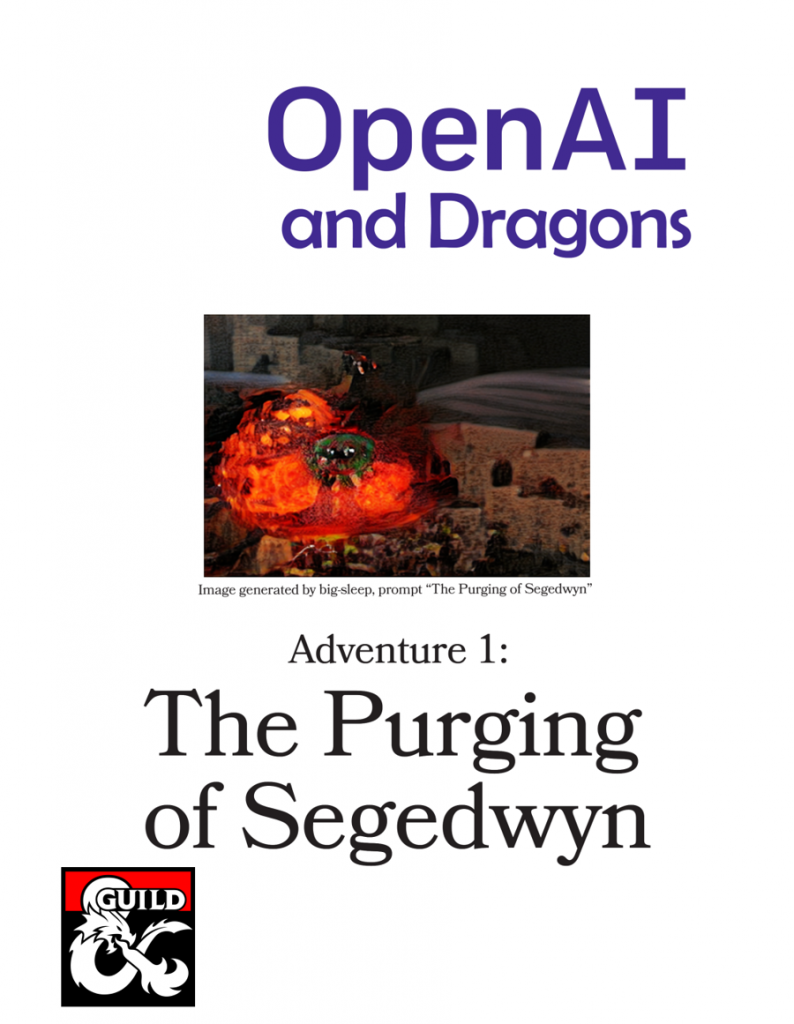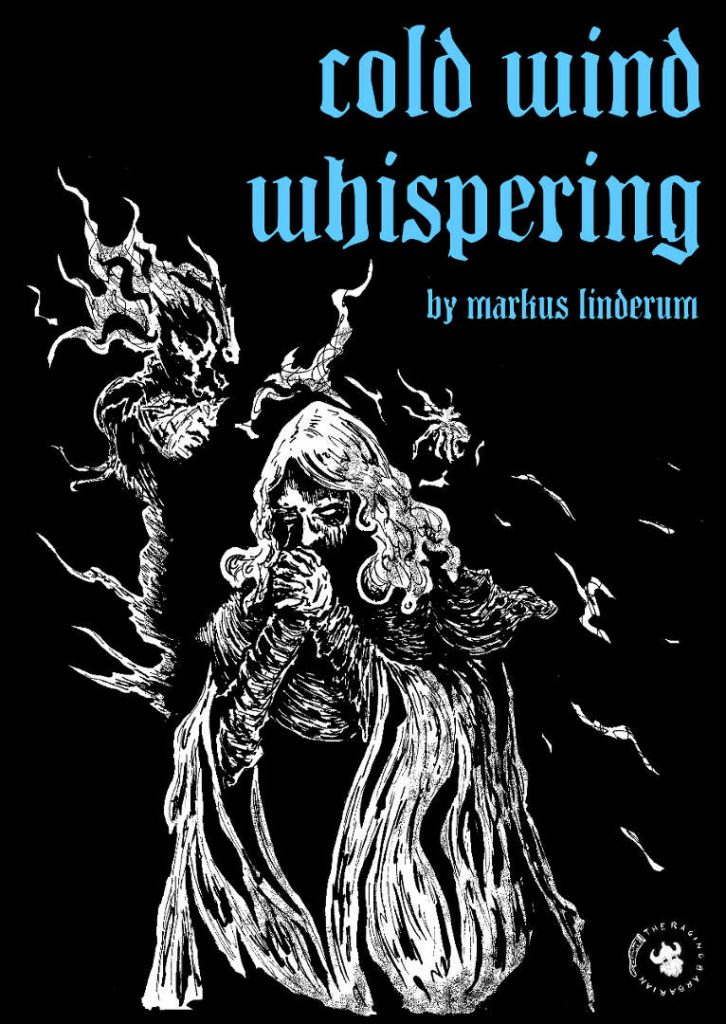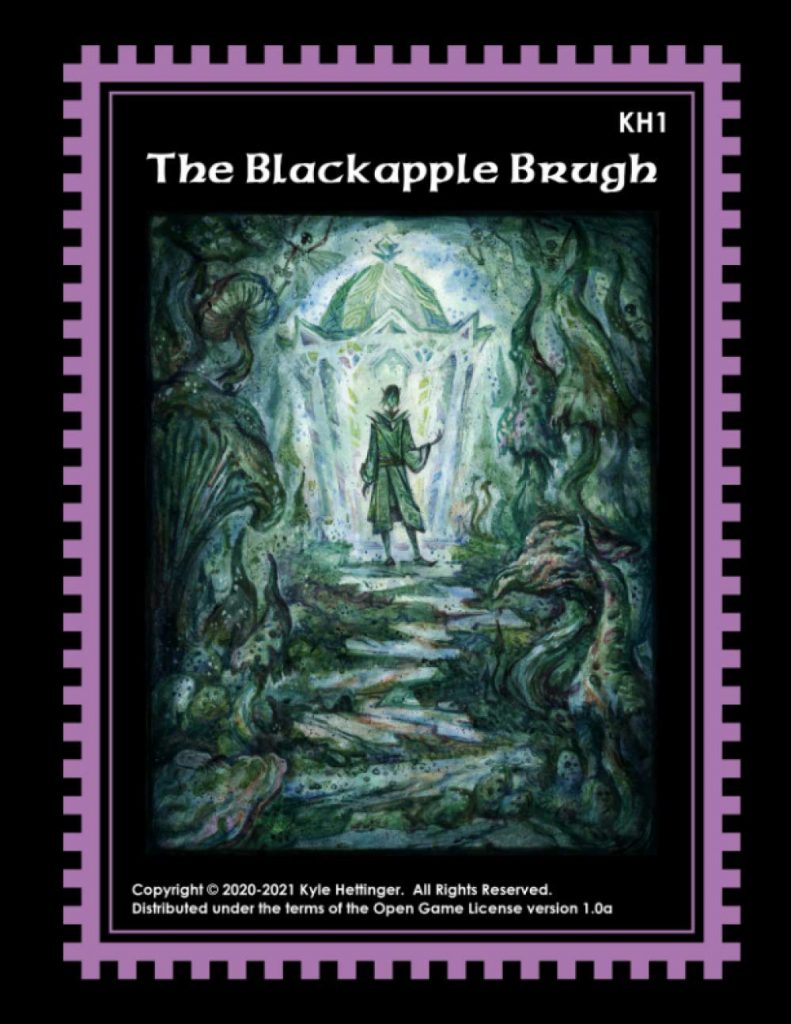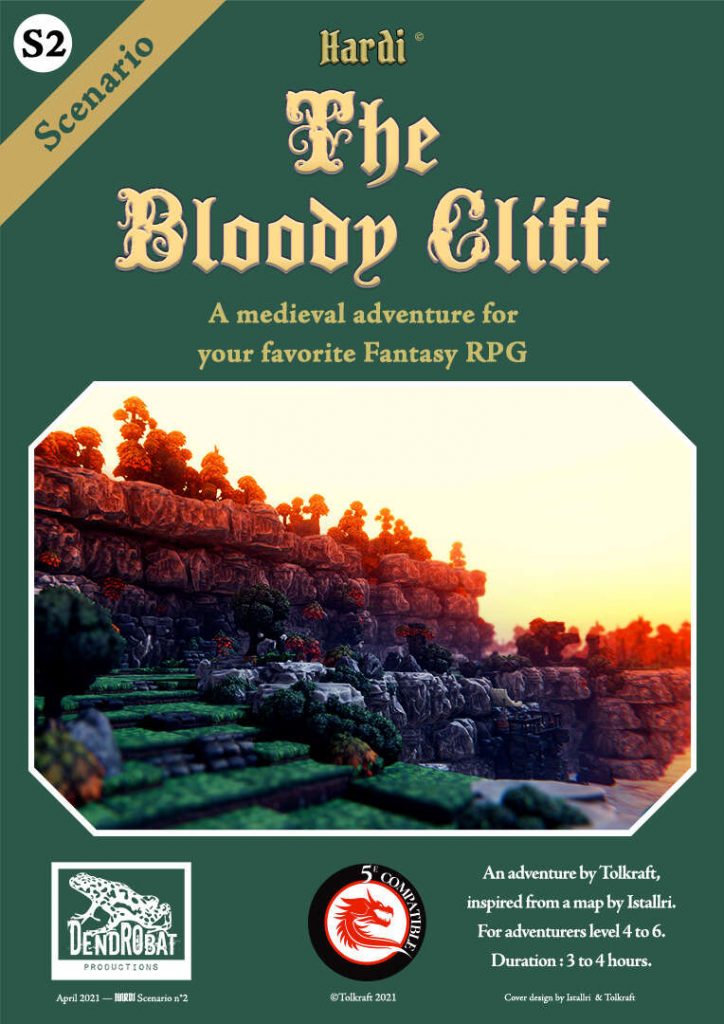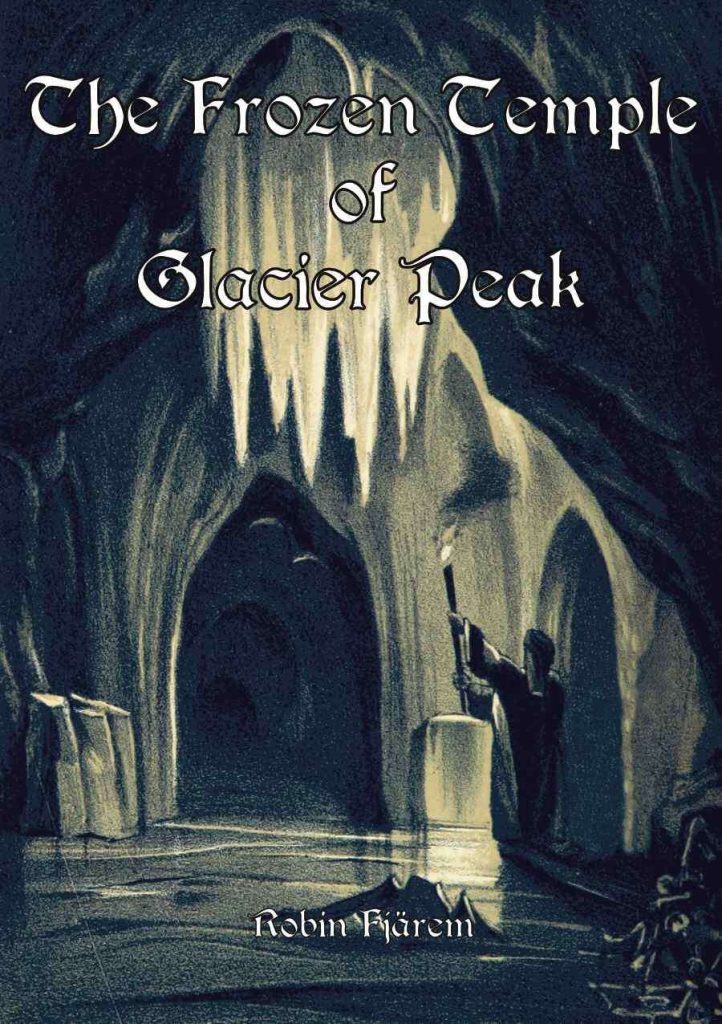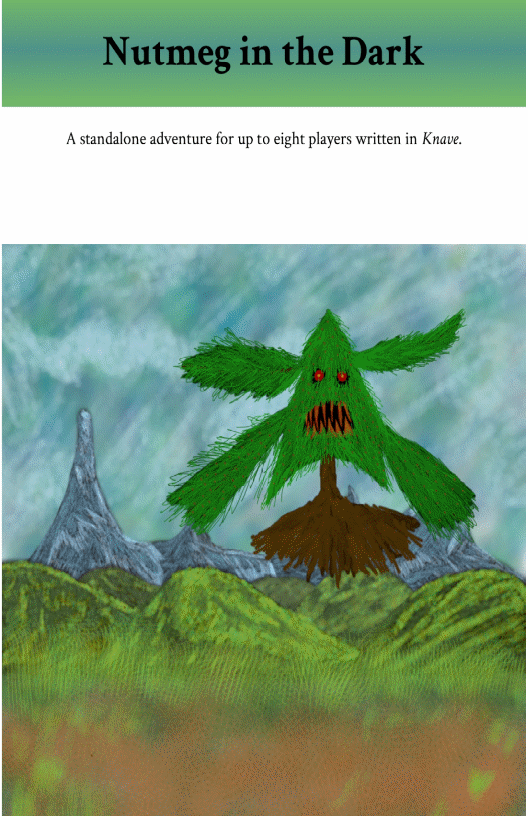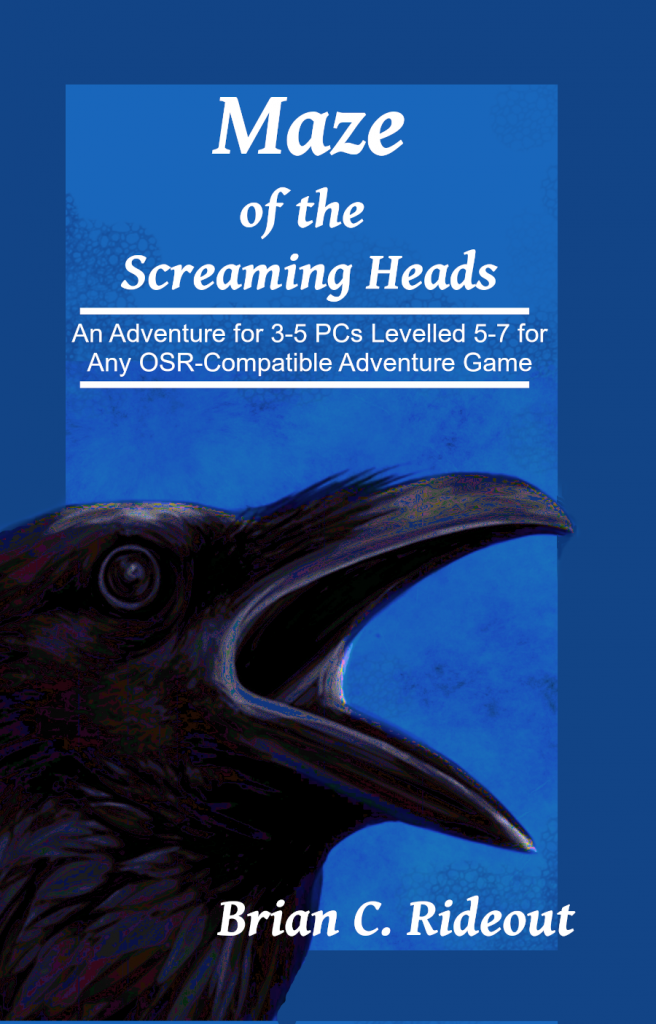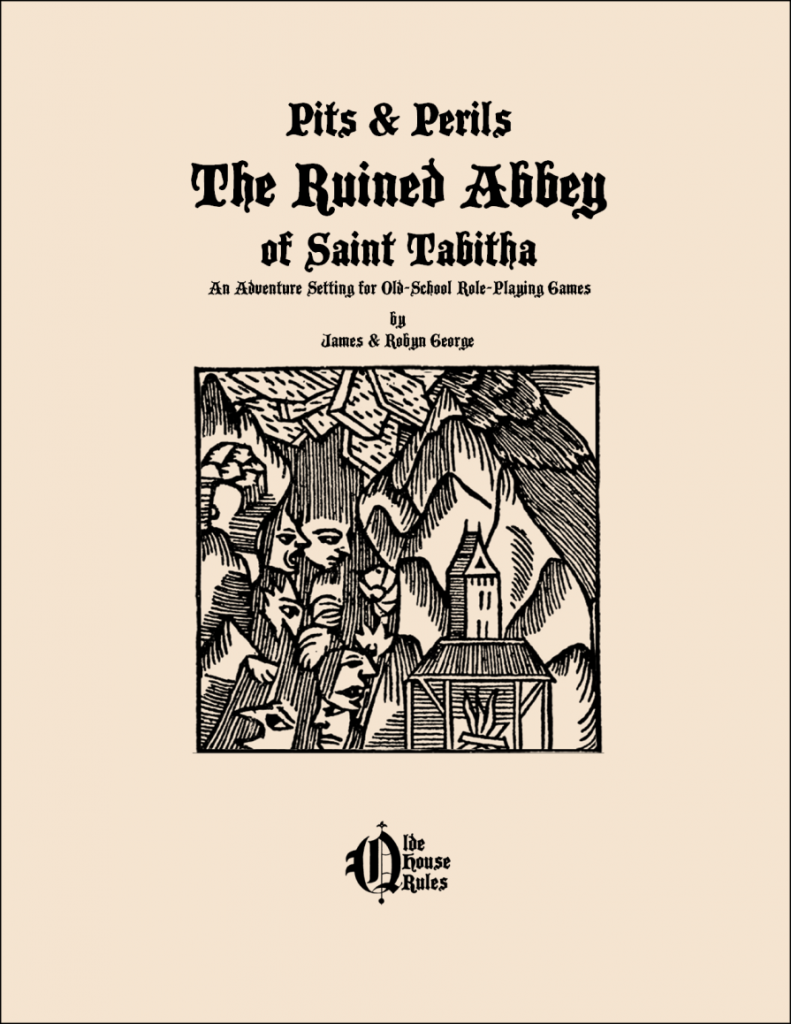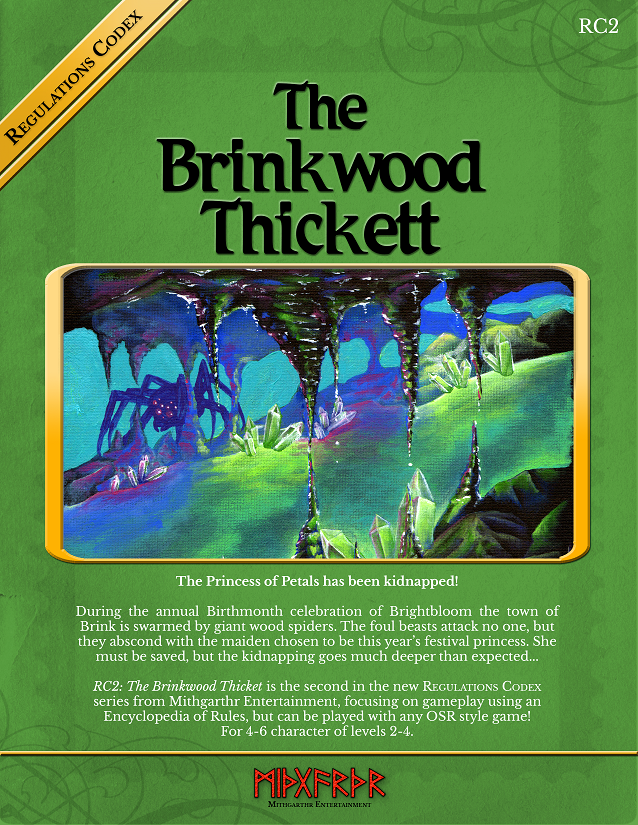
By Matthew Evans Mithgarthr Entertainment Rules Encyclopedia Levels 2-4
The Princess of Petals has been kidnapped! During the annual Birthmonth celebration of Brightbloom the town of Brink is swarmed by giant wood spiders. The foul beasts attack no one, but they abscond with the maiden chosen to be this year’s festival princess. She must be saved, but the kidnapping goes much deeper than expected…
This 26 page adventure features two mostly-linear mini-dungeons of about fourteen rooms each. Unique magic items can’t save a massively overwritten adventure featuring mostly combats. It reminds me of the bad old days of the early OSR adventures.
Twenty-six pages of triple column text. For an adventure with two dungeons, one thirteen rooms and one fifteen rooms. And, lest this think this is one of the modern “appendix heavy” adventures, it is not! It’s using those 26 pages to almost universally concentrate on the actual adventure. And, so, where does that highway go to? How did we get here?
Letting the days go by. Specifically, padding. There are weather rules in this. Almost an entire page of triple column text detailing the weather. Glorious glorious padding, telling us that rain two days in a row should mean that the rain on the second day should be the trailing edge of the rain on the first day. Chrome, the like I’ve not seen since Block Mania.
Or, perhaps, three solid pages of wandering monster tables for the wilderness! Not tables, per say, but more like three pages of large text blocks detailing the encounters in Heavy Wood, Light Woods, Wooded Hill, Meadows, and Cursed Lands. A simple encounter with a black bear, or stirge attacking is, at a minimum, eight lines of text long. Eight lines. To say something like ”they attack.” I’m not fucking kidding. “The party is swarmed by 2d6+1 stirge” takes eight lines of text, what with the blank line padding, stat blocks, and text. THAT’S how you get to 26 pages.
There’s a column of read-aloud to start the adventure. Which totally takes away your agency. During a village festival a bunch of giant spiders roll in to town and kidnap a village girl. You get to fight, but you are webbed quickly and the read-aloud covers all of the events, from them rolling in to them taking the girl to them leaving again. So, by the time you get to actually do something it’s all meaningless anyway. Then you get told to go save the girl. No reward, or anything. Just Go Save Her, but Ms preachy pants at the church. This is all drudgery of the worst sort! No supporting village information, nothing to engender you to the townfolk. Just nonsense.
So, you chase these giant fucking spiders for a day, in to their lair underground. You wander the fuck around down there for a bit until you find the room that says “Oh, they left again via this tunnel.” *sigh* I guess somehow you know that they took her with them. Whatever. I’ve given up caring. Spiders attack. Spiders Attack. Spiders Attack. *sigh*
You continue to follow the spider trial, I guess, until you get an elf village. They control the spiders and had them take the girl. They are going to sacrifice her because their shaman said to. Because their stream has dried up. Yeah, yeah, they sent some dudes up stream to find out why but they didn’t come back so organizing a giant spider raid on a village of humans, kidnapping a girl, and doing a blood sacrifice seems like the right thing to do, for them. Like, WTF man? I get it, elves are asshole, but this is some degenerate wild elf shit, and not in a good way. Oh! Oh! Also, goblins are good guys in this adventure and gnolls mostly talk to you. The ELVES are the asshats. Along with a wood drake you led the gnolls to the source of the stream because he knew that their pet rust monster would eat the metal pump, destroying the stream, and cause havoc with the leves, which would cause them fuck with the humans. Got that all? The wood drake thought it would be a lark, the elves are idiots, and the goblins and gnolls follow the modern trend of being friendly.
I don’t know. Four paragraphs of fucking text to tell us tha a false door opens a pit trap and a fountain with a secret door and a two sentence room description.
This is my fucking life. This is D&D. I remember these days. I remember my early days of reviewing. Of excitement in the OSR community. Of people creating things with lots of enthusiasm and whose visions didn’t not reach the page in the way that accurately communicated them to their audience. I should have thought that, ten years on now, that would no longer be an issue. I was wrong.
It’s got some good magic items. A spoon that makes things edible. A pendant with the word GLORY on it that does a phoenix/immolation thing ala breaking the staff of the archmage, unique swords. It’s a highlight of the adventure.
The only one.
This is $5 at DriveThru.
https://www.drivethrurpg.com/product/371129/RC2–The-Brinkwood-Thicket

